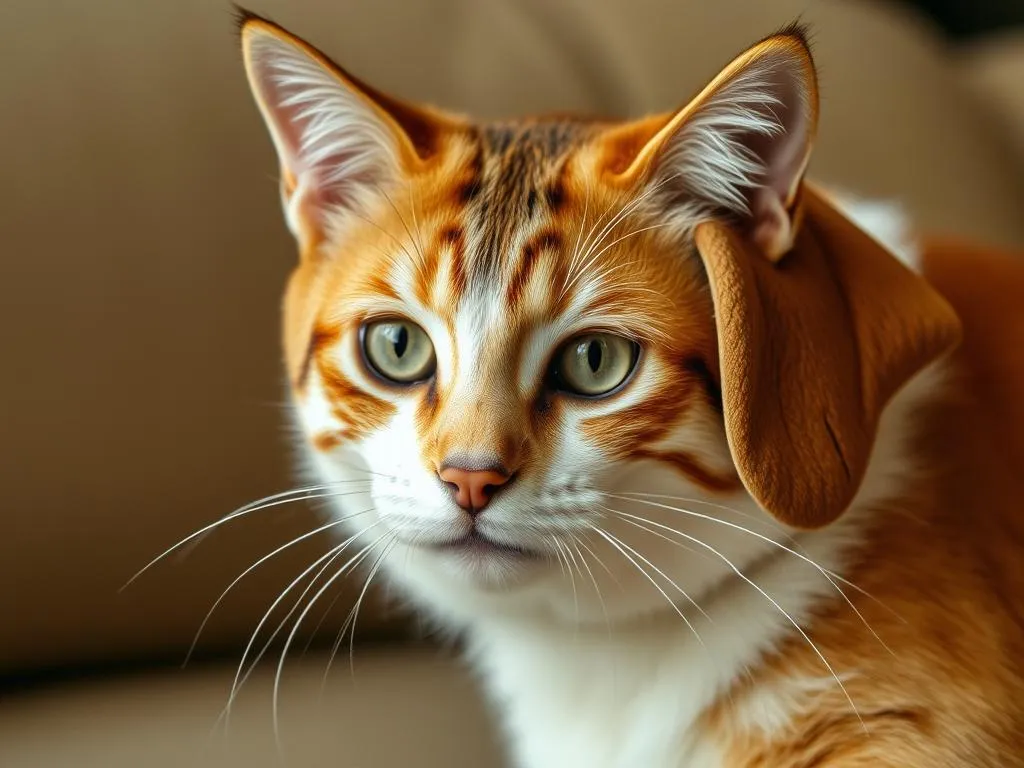
Understanding the relationship dynamics between cats and dogs can be both fascinating and perplexing. Many pet owners find themselves wondering, “why does my cat hate my dog?” The truth is that the relationship between these two popular pets can vary widely, from loving companionship to outright hostility. Recognizing and addressing these dynamics is crucial for creating a harmonious multi-pet household. This article will explore the reasons behind cat-dog animosity and provide practical solutions to improve their relationship.
Understanding Animal Behavior
Basic Instincts
To comprehend the animosity that might exist between cats and dogs, one must first look at their basic instincts. Cats are generally considered solitary hunters, relying on stealth and precision to catch their prey. In contrast, dogs are pack animals, exhibiting cooperative hunting behaviors. This fundamental difference in their evolutionary backgrounds significantly influences their interactions. While dogs may see cats as potential playmates or companions, cats often perceive dogs as threats, triggering their instinctual fight-or-flight response.
Social Structures in Cats and Dogs
The social structures of cats and dogs further complicate their interactions. Dogs are social creatures that thrive on interaction and hierarchy, often forming strong bonds with their human families and other pets. Cats, however, are more independent and territorial, often valuing their personal space. This difference in social behavior can lead to misunderstandings. For instance, a dog might approach a cat to play, but the cat may interpret this as an invasion of its territory, leading to fear or aggression.
Common Reasons for Cat-Dog Conflict
Territorial Behavior
Territoriality is a significant factor in many cat-dog conflicts. Cats are known for being highly territorial animals. They often claim spaces as their own and can become aggressive if they feel their territory is being invaded. Signs of territorial aggression in cats include hissing, swatting, and even growling. If a dog encroaches upon these areas, the cat may respond with hostility, leading to the common question, “why does my cat hate my dog?”
Fear and Anxiety
Fear and anxiety also play crucial roles in how cats perceive dogs. If a cat has had negative experiences with dogs in the past—such as being chased or cornered—the fear can linger, influencing its behavior toward dogs in general. Recognizing signs of fear in cats is essential. These signs can include dilated pupils, flattened ears, and attempts to hide or escape. A fearful cat may lash out at a dog simply out of self-defense.
Lack of Socialization
The lack of early socialization is another reason for cat-dog animosity. Cats and dogs that are not exposed to each other at a young age may not learn how to interact appropriately. Insufficient exposure can lead to misunderstandings and fear-based reactions. For instance, a dog might wag its tail, a sign of friendliness, but a cat may misinterpret this as a threat, leading to aggression. Early and positive socialization is crucial in preventing these issues.
Personality Differences
Just like humans, pets have distinct personalities that can clash. Some cats are naturally more aloof and independent, while some dogs are exuberant and playful. This difference can lead to a mismatch in interactions, where the dog’s playful approach may overwhelm the cat. Conversely, a timid dog may be intimidated by a confident cat. Recognizing these personality differences is vital in understanding why conflicts may arise.
Signs That Your Cat Dislikes Your Dog
Body Language Signals
One of the most telling indicators of a cat’s feelings toward a dog is its body language. Cats communicate a lot through their posture and movements. If a cat arches its back, flattens its ears, or swats at the dog, these are clear signs of dislike or aggression. In contrast, a relaxed cat will have a neutral tail position and may even show curiosity.
When comparing this to dog body language, it’s essential to note that dogs may not understand a cat’s signals. A dog’s wagging tail, for example, is often a sign of excitement or friendliness, which may be misinterpreted by a cat as a threat. Understanding these signals can help pet owners intervene before conflicts escalate.
Vocalizations
Cats also express their feelings vocally. Common sounds that indicate annoyance or distress include hissing, growling, or even yowling. These vocalizations serve as warnings to the dog to back off. If a cat is frequently vocalizing around a dog, it may be a clear indication that it is uncomfortable or unhappy in that situation.
Behavioral Changes
Changes in a cat’s behavior can also signify dislike towards a dog. If a cat suddenly stops eating, avoids its litter box, or begins to hide more often, these can be signs of stress or anxiety related to the dog’s presence. Monitoring these changes is crucial for pet owners to ensure the well-being of both pets.
How to Improve Cat-Dog Relationships
Gradual Introduction Techniques
When introducing a cat and a dog, it’s essential to take things slow. Gradual introductions can help both pets adjust to each other’s presence. Start by keeping them in separate rooms and allowing them to sniff each other’s belongings. After a few days, you can begin to allow short, supervised interactions. Always monitor their behavior closely and be ready to separate them if tensions rise.
Creating Safe Spaces
Providing safe spaces for both pets is vital. Cats, in particular, need areas where they can retreat if they feel threatened. This can be accomplished by setting up high perches or cat trees that allow the cat to observe the dog from a safe distance. Additionally, ensure that the dog has its own space where it can feel secure. Creating these safe zones can help alleviate tension and encourage positive interactions.
Positive Reinforcement
Using positive reinforcement can significantly improve the relationship between your cat and dog. Rewarding both pets with treats and praise when they interact calmly can encourage them to view each other more favorably. This technique can help create positive associations, making future encounters less stressful.
Seeking Professional Help
If conflicts persist despite your best efforts, it may be time to seek professional help. Consulting a veterinarian or an animal behaviorist can provide valuable insight into the underlying issues. They can offer tailored strategies to help your pets coexist peacefully. Finding the right professional can make a significant difference in resolving ongoing conflicts.
Case Studies and Anecdotes
Real-life Examples
Many pet owners have shared their experiences regarding cat-dog relationships. One owner recounted how her cat, initially hostile towards her new puppy, eventually learned to tolerate him after several weeks of gradual introductions and positive reinforcement. Over time, the once-aloof cat began to play with the dog, demonstrating that patience and consistency can lead to harmony.
Expert Opinions
Veterinarians and animal behaviorists often emphasize the importance of understanding individual pet behavior. They note that every animal is unique, with its own set of experiences and instincts that shape its reactions. Experts frequently recommend patience and a tailored approach when addressing conflicts, as each situation may require different solutions.
Conclusion
Understanding why does my cat hate my dog involves recognizing the complex interplay of instincts, social behaviors, and individual personalities. By observing body language, vocalizations, and behavioral changes, pet owners can gain valuable insights into their pets’ relationships. Implementing gradual introductions, creating safe spaces, and utilizing positive reinforcement are essential steps in fostering a more harmonious environment. It’s important to remember that patience and consistency are keys to resolving conflicts and building lasting bonds between your cat and dog. With the right approach, it’s entirely possible for these two species to coexist peacefully in your home.
FAQs
What should I do if my cat and dog fight?
If your cat and dog fight, it’s crucial to intervene safely. Avoid physically separating them with your hands; instead, use distractions like loud noises or toss a toy to separate them. After the altercation, allow both pets to calm down before attempting to reintroduce them gradually.
Can cats and dogs ever become friends?
Yes, with proper socialization and gradual introductions, many cats and dogs can become friends. It may take time, but a peaceful coexistence and even affectionate bonds are possible.
How can I tell if my dog is afraid of my cat?
Signs that your dog may be afraid of your cat include cowering, hiding, or avoiding eye contact. If your dog is excessively submissive or seems anxious around the cat, these could be indicators of fear.
What are the best breeds of dogs to introduce to cats?
While individual temperament varies, generally calmer and more submissive dog breeds, such as Cavalier King Charles Spaniels, Basset Hounds, and Golden Retrievers, tend to be more cat-friendly. Always consider the individual personality of both pets when introducing new animals.
How can I help my cat feel safe around my dog?
To help your cat feel safe around your dog, create high perches or safe zones where the cat can retreat. Gradual introductions and ensuring the dog understands boundaries are also essential steps. Providing the cat with plenty of enrichment can help reduce its anxiety around the dog.
Understanding and addressing the complexities of cat-dog relationships can lead to a more peaceful and enjoyable home for both pets and their owners.









